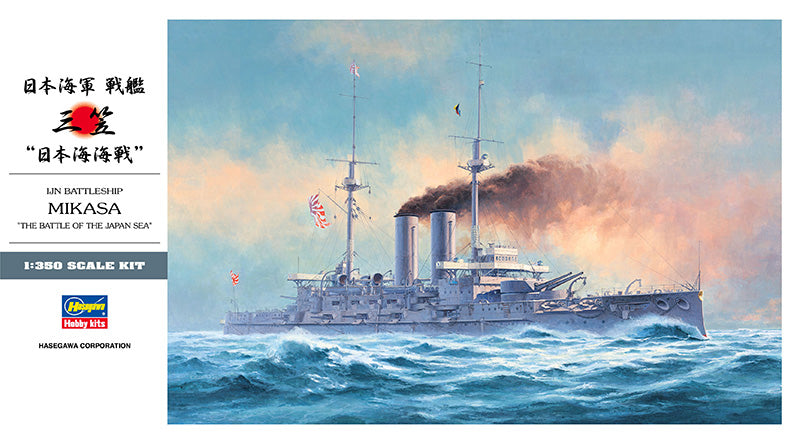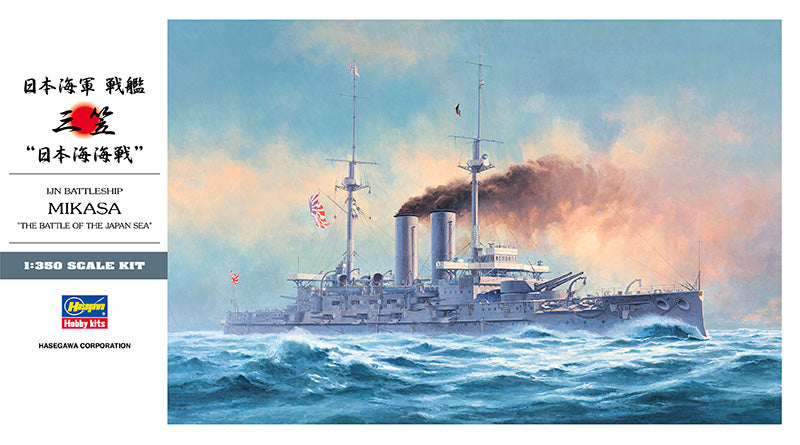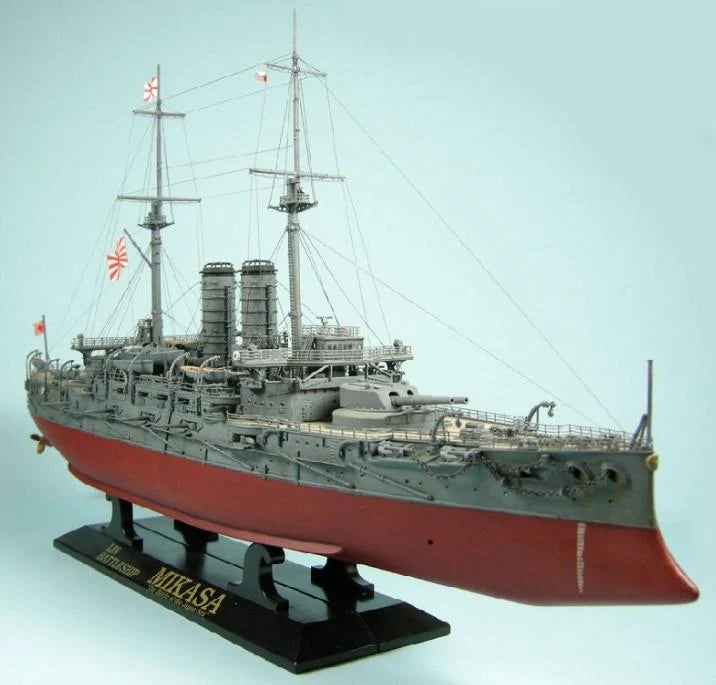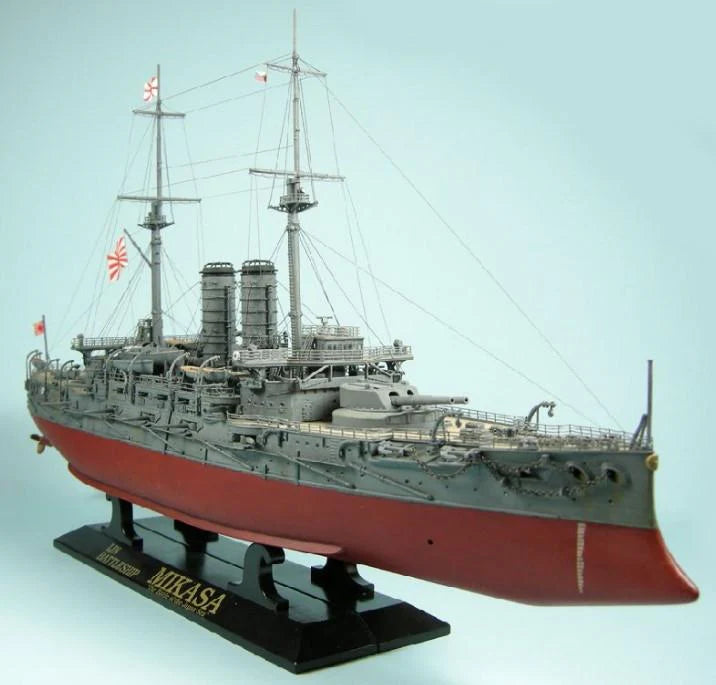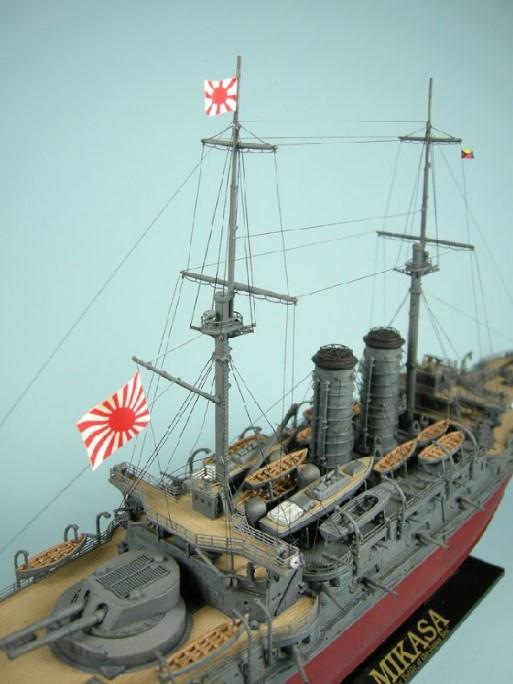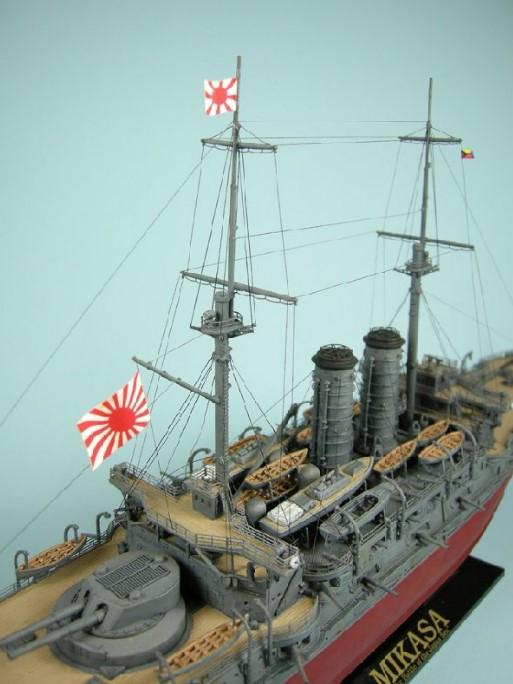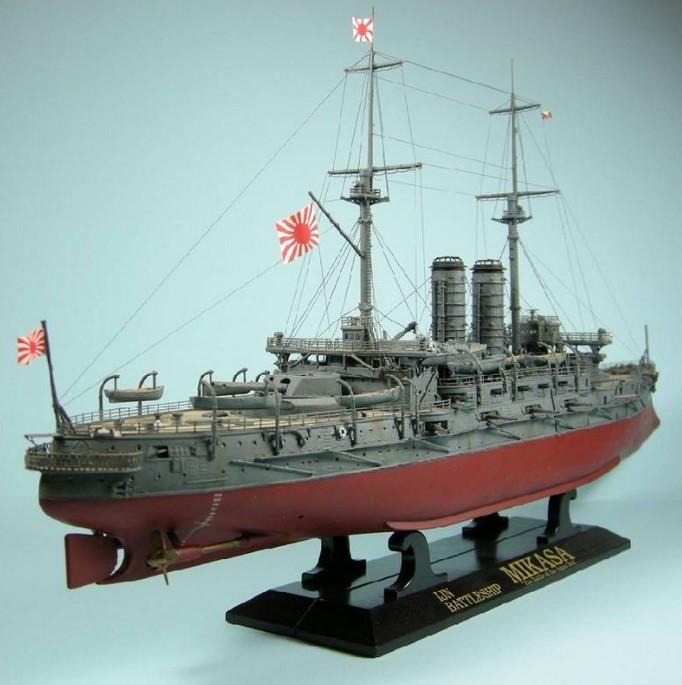Hasegawa 1:350 IJN Battleship Mikasa The Battle Of The Japanese Sea Kit HAZ21 - FOR PRE-ORDER - DUE JUNE 2025
Hasegawa 1:350 IJN Battleship Mikasa The Battle Of The Japanese Sea Kit HAZ21 - FOR PRE-ORDER - DUE JUNE 2025 will be backordered from our supplier. Delivery will take between 3-5 working days & orders will be despatched once completed.
Description
Description
Hasegawa 1:350 IJN Battleship Mikasa The Battle Of The Japanese Sea Kit HAZ21
With an armament of four 12" guns, fourteen 6" guns, sixteen 12 pounders, four 47 mm rapid fire guns, and four underwater 45.7 cm torpedo tubes, the Mikasa was the most powerful battleship of her time. She was the IJN's flagship during the Russo-Japanese War of 1904-1905.
In the Battle of The Yellow Sea, the Japanese fleet, under the command of Admiral Togo (among his officers was a young Isoroku Yamamoto) won a great victory over the Russian fleet by keeping the Russians holed up in Port Arthur and not allowing them to escape to Vladivostok. During this battle, the Mikasa sustained 20 hits with no major damage (these were the days when the flagship still headed the line of battle and was thus a magnet for enemy fire).
Later in the Battle of Tsushima, a leaner fit of the Mikasa with two less yardarms and more lifeboats took 30 hits with no major damage. This battle was a decisive victory that came a few months shy of the 100th anniversary of Nelson's decisive victory at Trafalgar. Despite being outnumbered, the Japanese sunk 21 Russian ships, captured 7, and disarmed 6 at a cost of only 3 torpedo boats. The Russians lost 4,380 dead to the Japanese 117.
The Mikasa was sunk in Harbor during World War 2, but after the war, Admiral Chester Nimitz headed up efforts to have her raised. She is now a museum ship encased in concrete, located in Yokosuka near the Kure Arsenal and US Navy base.
Payment & Security
Payment methods
Your payment information is processed securely. We do not store credit card details nor have access to your credit card information.

